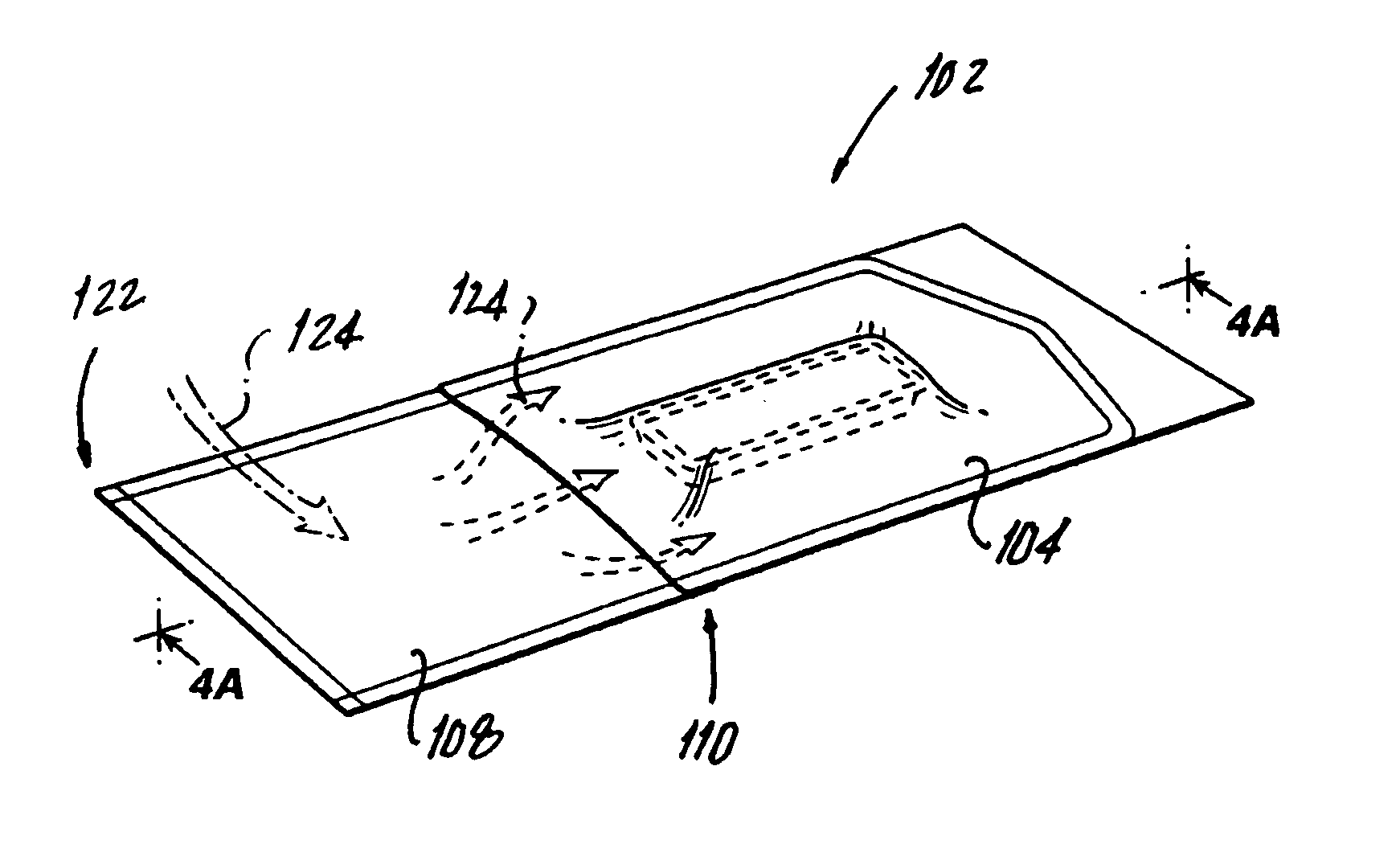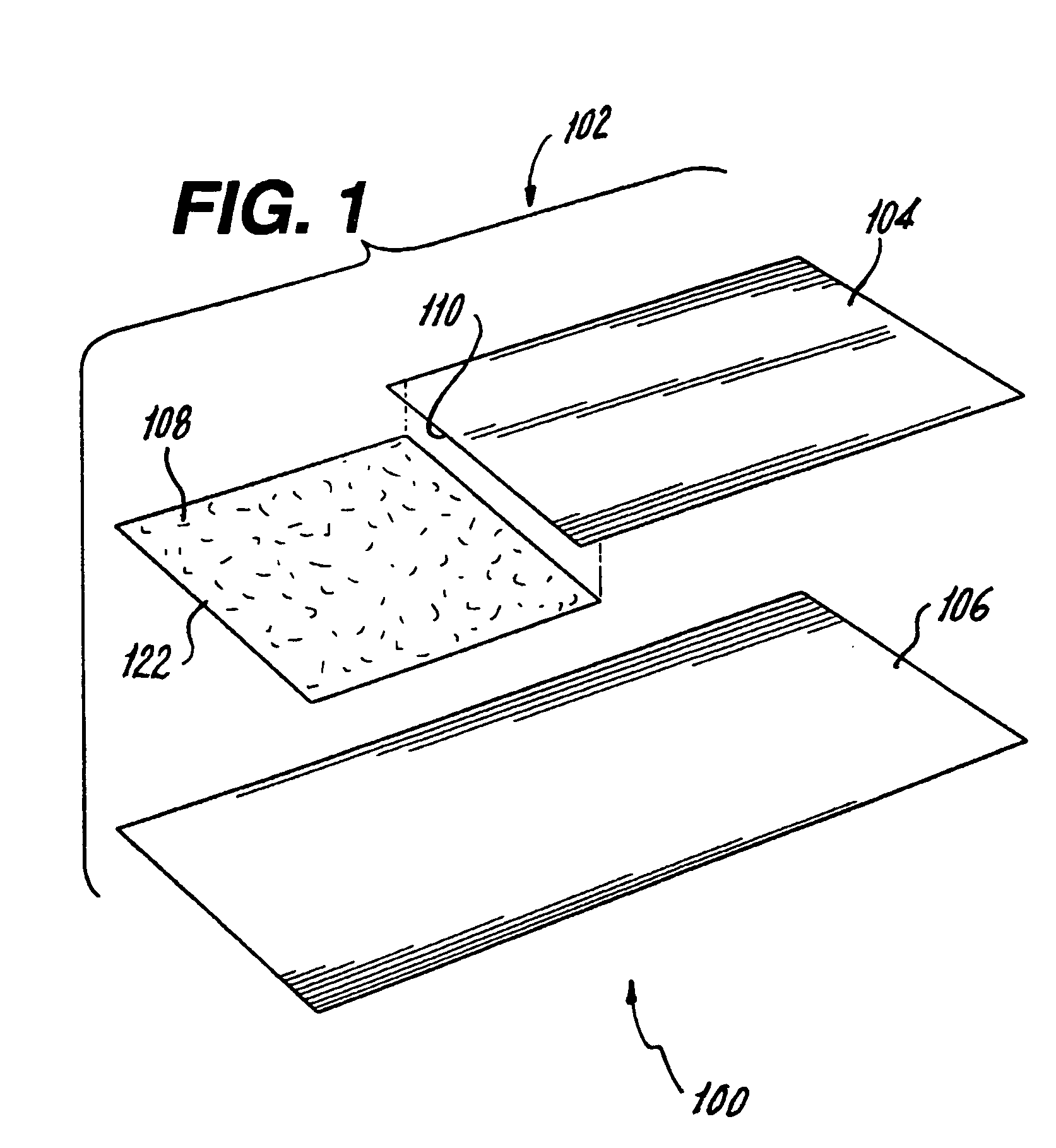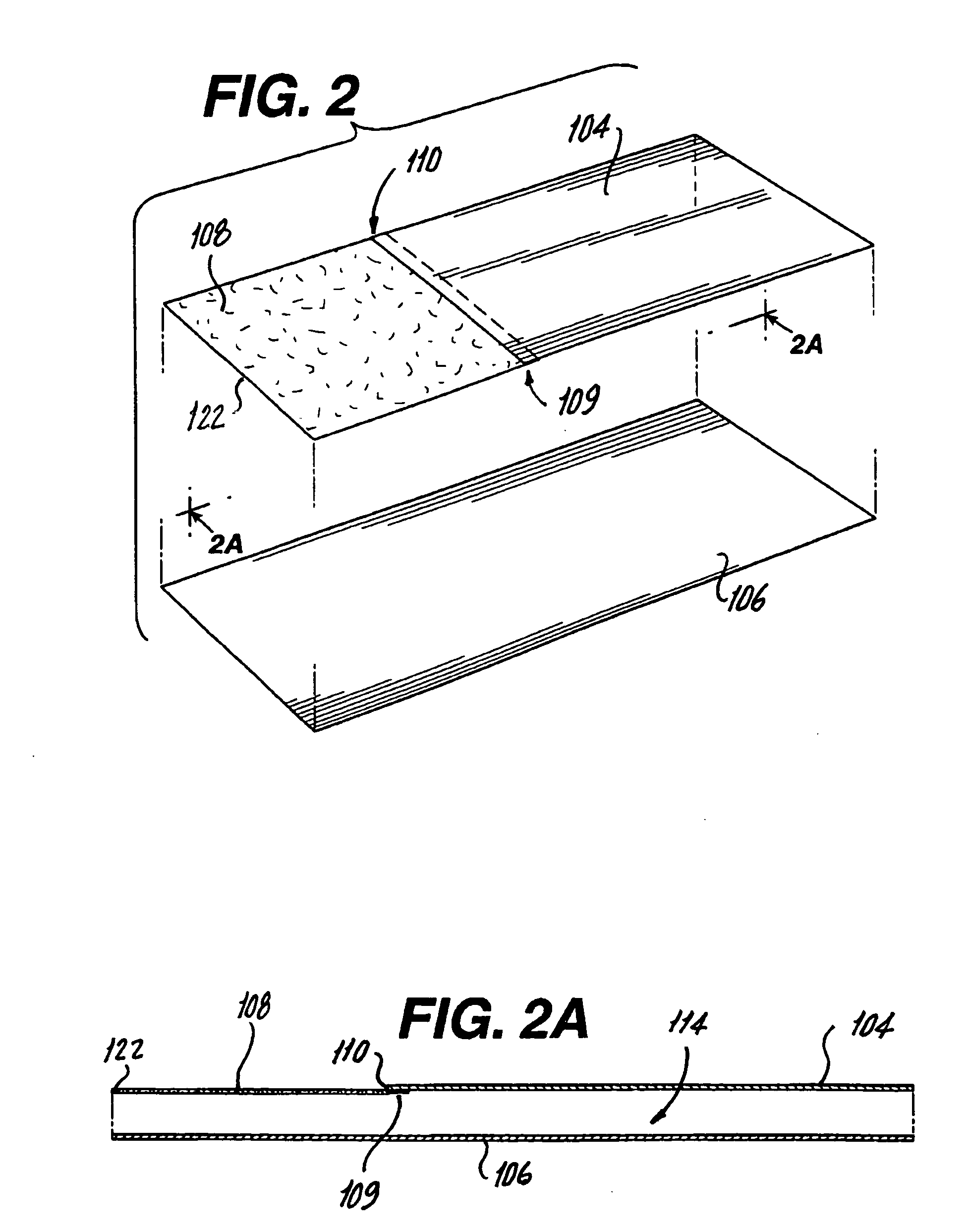Method for improving stability and effectivity of a drug-device combination product
- Summary
- Abstract
- Description
- Claims
- Application Information
AI Technical Summary
Benefits of technology
Problems solved by technology
Method used
Image
Examples
Embodiment Construction
[0034] Referring now to FIGS. 1 through 3A, a package 100 for a drug-device combination product is illustrated. Package 100 includes an outer package 102 including a first gas impermeable sheet 104 and a second gas impermeable sheet 106 hermetically sealed on three sides 112 (FIG. 3). A gas permeable header 108 is attached at an attachment point 109 located on an unsealed side 110 of first gas impermeable sheet 104 and sealed to second gas impermeable sheet 106 on two sides. First and second gas impermeable sheets 104, 106 and gas permeable header 108 form an interior 114 with an opening 116 communicating with interior 114. The impermeable sheet material should be flexible and can be selected from among many types of high barrier, flexible packaging materials that are commonly used to enclose medical devices. Preferably the impermeable sheet material is a multilayered, heat seal peelable packaging material that includes one or more foil layers, various polymer layers and a heat seal...
PUM
| Property | Measurement | Unit |
|---|---|---|
| Permeability | aaaaa | aaaaa |
| Gas permeability | aaaaa | aaaaa |
| Antimicrobial properties | aaaaa | aaaaa |
Abstract
Description
Claims
Application Information
 Login to View More
Login to View More - R&D
- Intellectual Property
- Life Sciences
- Materials
- Tech Scout
- Unparalleled Data Quality
- Higher Quality Content
- 60% Fewer Hallucinations
Browse by: Latest US Patents, China's latest patents, Technical Efficacy Thesaurus, Application Domain, Technology Topic, Popular Technical Reports.
© 2025 PatSnap. All rights reserved.Legal|Privacy policy|Modern Slavery Act Transparency Statement|Sitemap|About US| Contact US: help@patsnap.com



